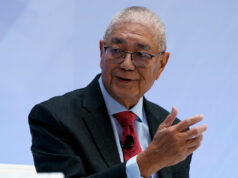Peso expected to climb on weak US jobs report
THE PESO will likely trade higher against the dollar this week on the back of softer-than-expected US labor data and ahead of the European Central Bank’s (ECB) policy meeting, which investors are watching for hints on its future decisions.

The peso closed at P51.17 versus the greenback on Thursday, slumping four centavos from the previous session.
Week on week, the local currency lost nine centavos from a P51.08 close last Aug. 25.
Local financial markets were closed last Friday in observance of Eid’l Adha.
An economist from a local bank said the peso may rise versus the dollar this week, falling within a wide range of P50.90 to P51.30, on bets of hawkish comments from the ECB as well as weak US non-farm payrolls data.
“The dollar might depreciate this week, as weaker-than-expected US reports on non-farm payrolls and average hourly earnings might temper expectations of another US rate hike this year,” Land Bank of the Philippines (Landbank) market economist Guian Angelo S. Dumalagan said in an e-mail over the weekend.
The US Labor Department said on Friday non-farm payrolls increased by 156,000 last month. The economy created 399,000 jobs in June and July. Meanwhile, the unemployment rate ticked up one-tenth of a percentage point to 4.4% and average hourly earnings rose three cents or 0.1% after advancing 0.3% in July.
“Likely hawkish comments from the European Central Bank (ECB) might also weigh down on the greenback,” Mr. Dumalagan said. “The dollar might resume its downward trend on Friday due to potentially more hawkish guidance from the ECB during its September 2017 monetary policy meeting.”
“While the ECB might not yet begin its tapering this month, it might provide some hints about the timing of such tightening measure. The ECB’s hawkish remarks could weaken the greenback against the peso, as a ripple effect of the dollar’s potential depreciation against the euro,” he added.
The ECB holds its monetary policy meeting on Thursday.
“The factors that could reverse the dollar’s projected downward bias include an escalation in the geopolitical tension between the US and North Korea as well as possible dovish comments from the ECB during its monetary policy meeting,” Mr. Dumalagan said.
“Meanwhile, higher-than-expected Philippine inflation could further weaken the greenback, as such development could increase the chances of a rate hike from the BSP (Bangko Sentral ng Pilipinas) later this year,” he said.
The Philippine Statistics Authority will release official August inflation data tomorrow. BSP’s Department of Economic Research gave a 2.6-3.4% forecast range for the month due to higher oil and electricity costs and rising rise prices.
Meanwhile, another economist from a local bank had said the peso could trade lower against the dollar this week amid bets of an upbeat US economy.
“After the long weekend and the new month coming in, I expect the peso be weaker with the US economy expected to be better,” Union Bank of the Philippines (UnionBank) chief economist Ruben Carlo O. Asuncion said in an e-mail on Friday.
“However, I also see the peso gaining as the optimism on the Philippine economic fundamentals across the board weigh in heavy on investors’ perception of the economy and its potential growth in the medium term,” Mr. Asuncion said. — J.M.D. Soliman



